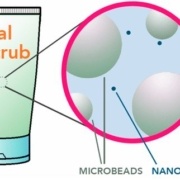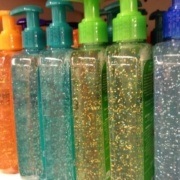What’s the deal with the Plastic Soup again?
March 15 2024 That’s what readers of news site nu.nl on their comment platform Nujij were wondering. In a recent […]
The Algalita Marine Research and Education Foundation has returned from an expedition to the South Pacific Gyre in the South Pacific Ocean. The organisation found a worrying amount of plastic there.
The expedition was led by Captain Charles Moore, who discovered the plastic soup in 1997 and gave it its name. Since then he has done thorough research into the plastic soup in the North Pacific Gyre, a rotating ocean current in the North Pacific Ocean. Given the vast amount of plastic that is accumulating there, it is called the Great Pacific Garbage Patch.
Algalita gave the name the South Pacific Garbage Patch to the high concentration of plastic that it recently discovered in the South Pacific Ocean. The South Pacific Garbage Patch covers an area of at least one million square kilometers, which is larger than the surface area of Germany and France combined. Most of the plastic consists of microplastics such as microbeads, microfibers from clothing, and small fragments from weathered large pieces of plastic.
Click here for our file on Microplastics
In 2009, Algalita recorded six kilos of plastic for every kilo of plankton in the Great Pacific Garbage Patch. The ratio of plastic to plankton is not yet known for the South Pacific Garbage Patch. However, Charles Moore expects that the amount of plastic there is about 10 years behind the northern gyre.
Click here for our file on Gyres and Hotspots
The difference in the amount of plastic used between the northern and southern hemispheres could explain this. Europe and the United States of America have used huge amounts of plastic for years, while regions such as South America and Asia are now catching up.
According to the researchers, the solution lies in reducing the amount of plastic that people produce, use and dispose of around the world. It is important to stop plastic leakage into the environment at source. This is the only way that we can ultimately stop plastic from entering the ocean. Once it is in the ocean, it is virtually impossible to remove.
March 15 2024 That’s what readers of news site nu.nl on their comment platform Nujij were wondering. In a recent […]
The first Impact Fair is Europe’s largest Impact Experience. An interactive ‘immersive’ experience of impactful examples.
The waste-export to countries outside of the EU has been restricted The Netherlands is against a carpet ban on shipping of plastic waste.
The waste-export to countries outside of the EU has been restricted The Netherlands is against a carpet ban on shipping of plastic waste.

 UK: ban on microbeads in cosmetics
UK: ban on microbeads in cosmetics